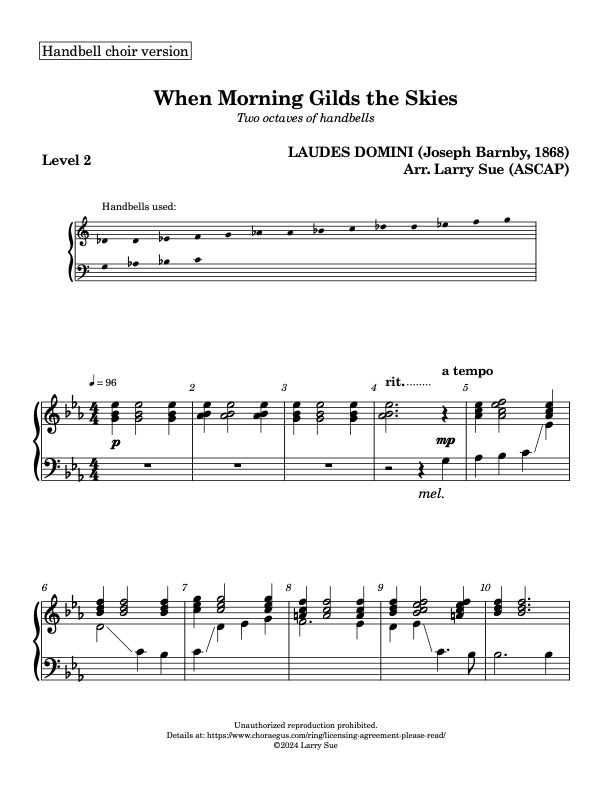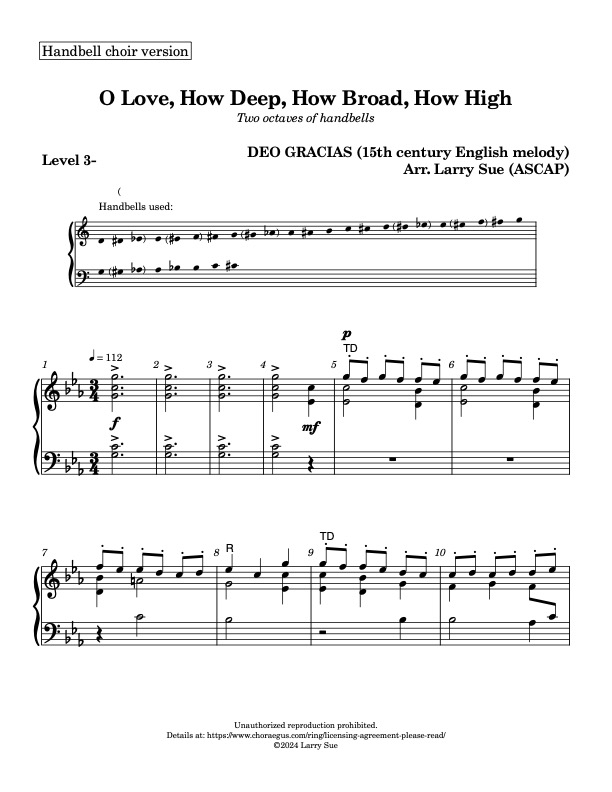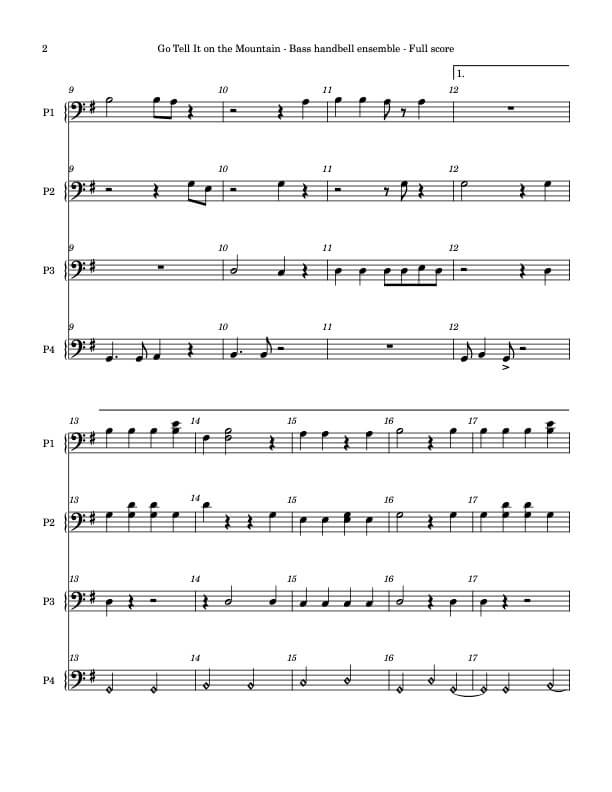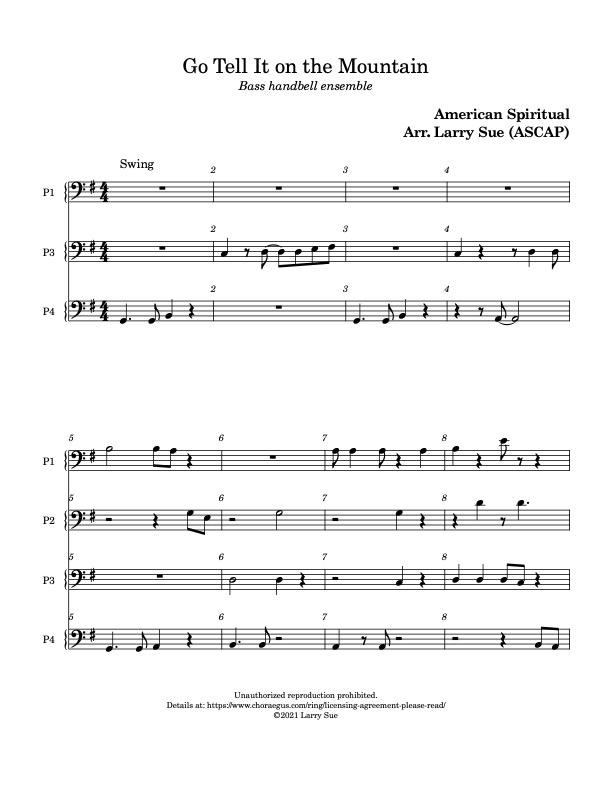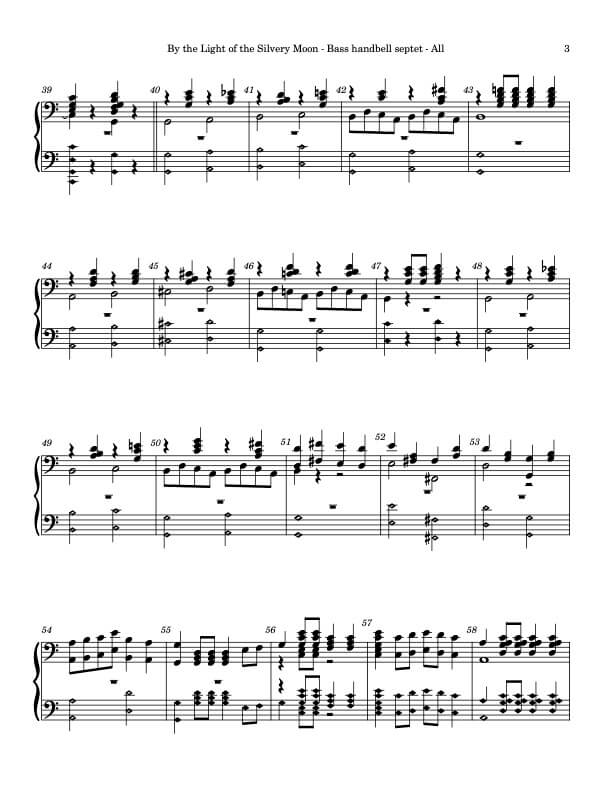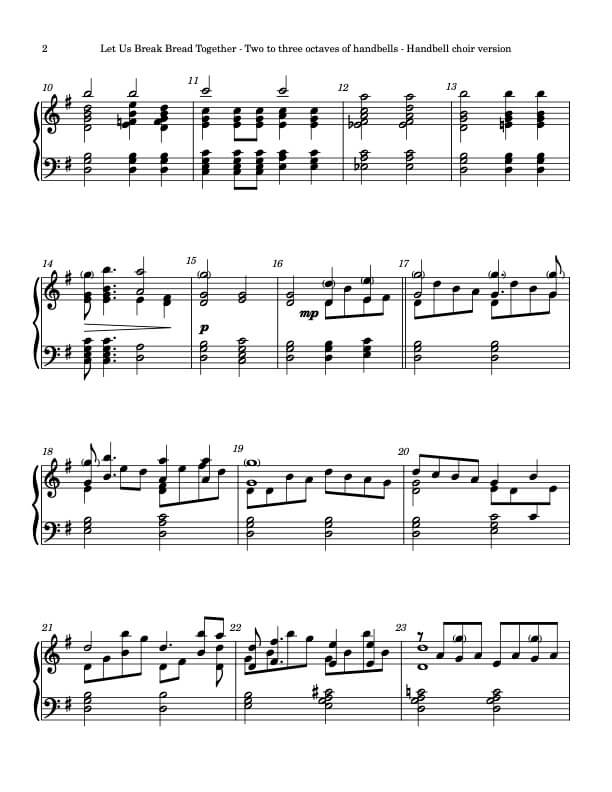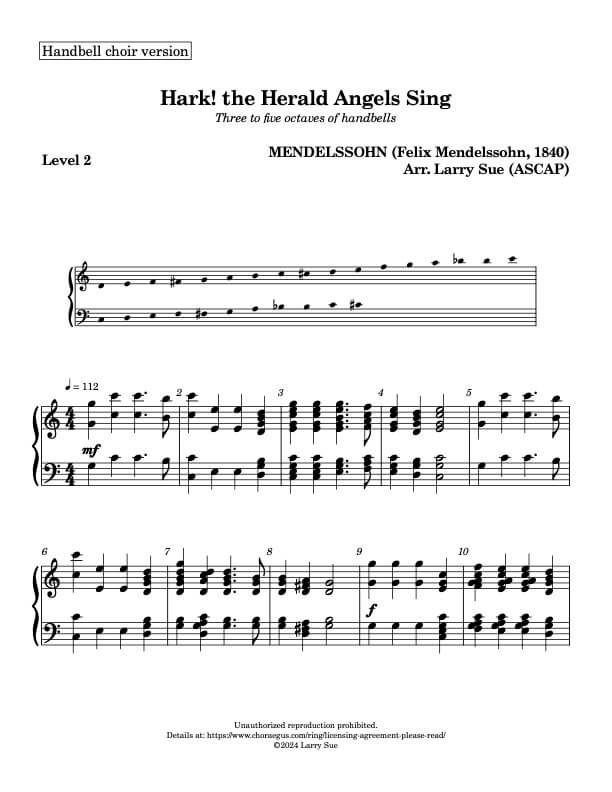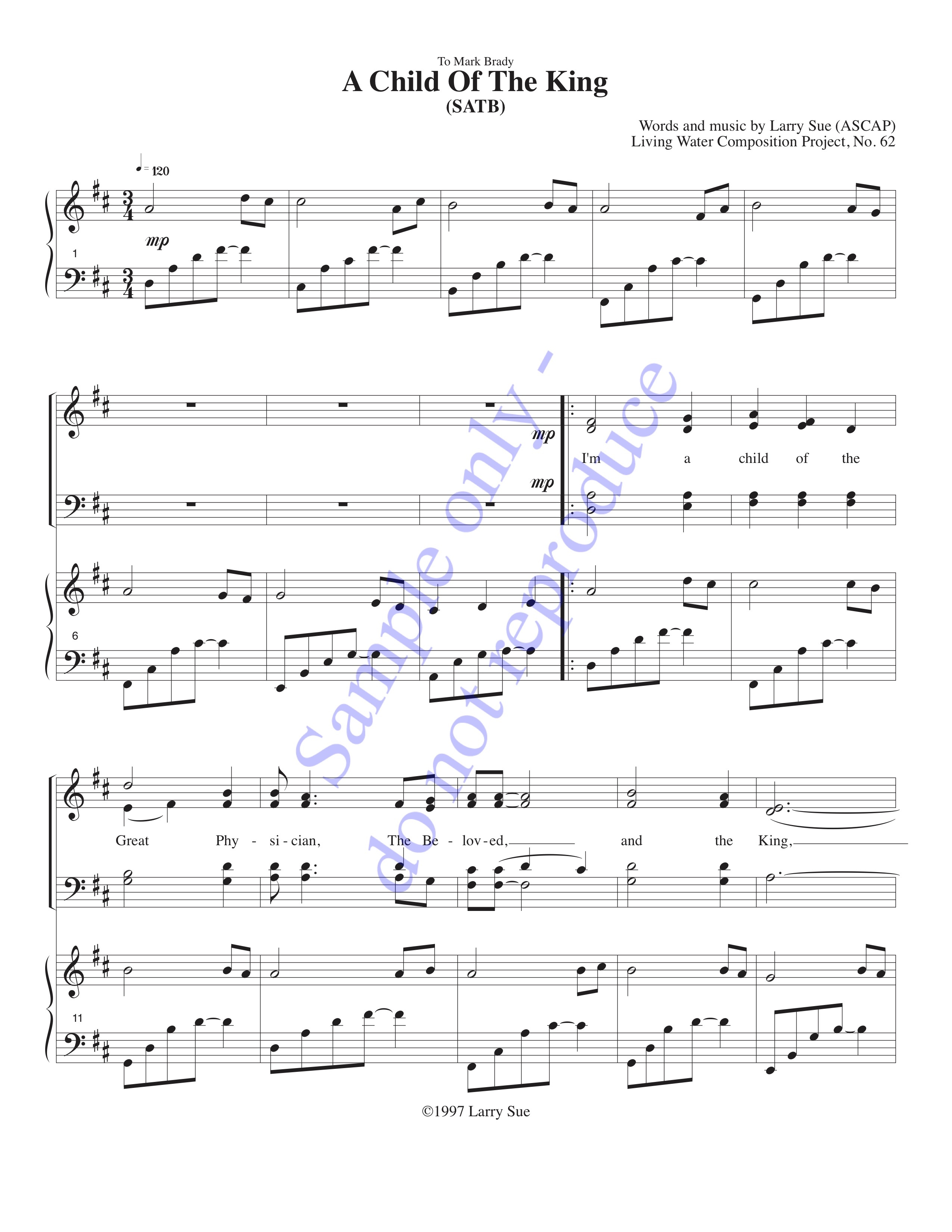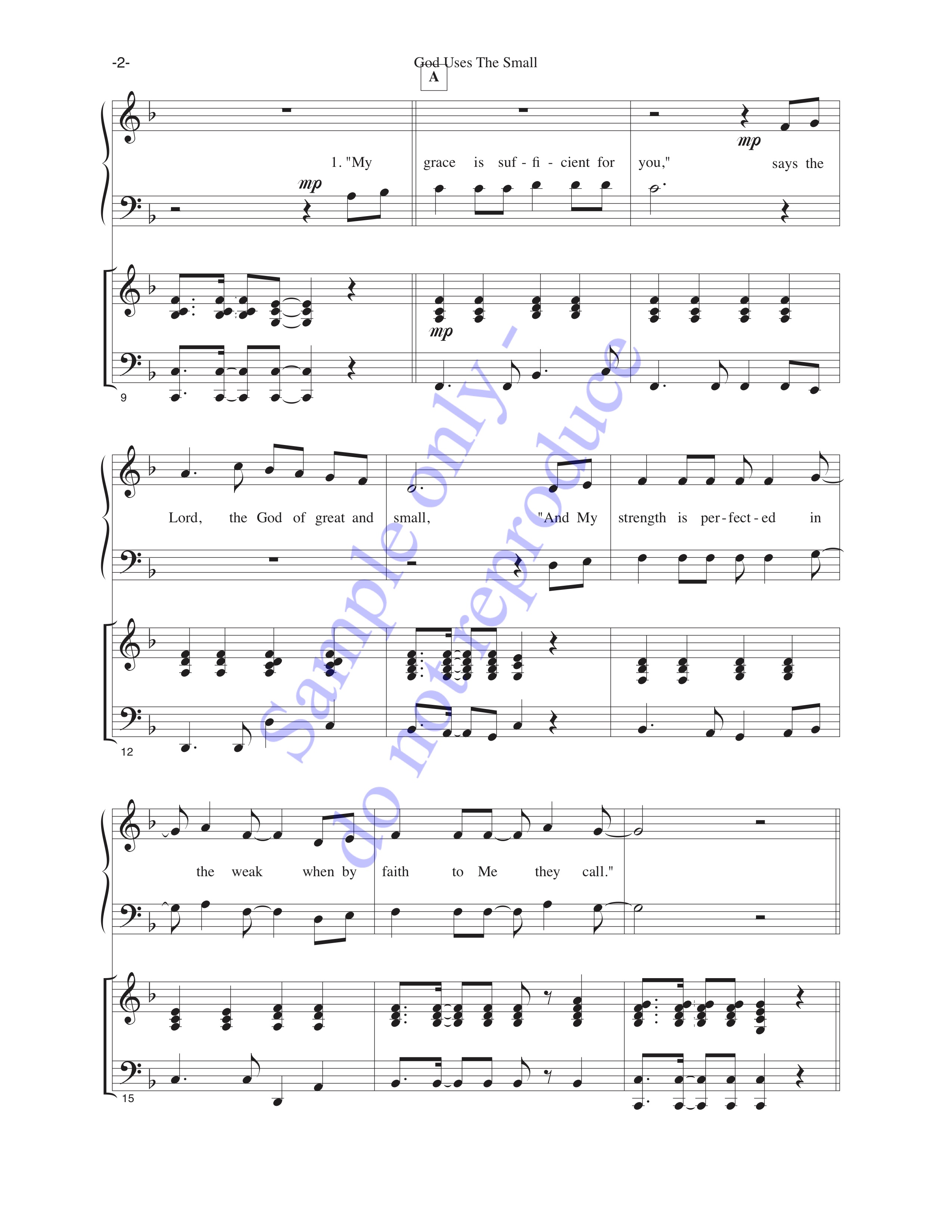We’ve learned that there are some folks might not be able to play our G5- and F5-based scores of Dona Nobis Pacem. For instance, there are sets in England that have white keys C5-G6, and maybe F#s and Bbs, and therefore won’t have all the needed notes. To help work with this, we’ve added C5- …
Tag: handbells
Handbells were invented in 17-century England as a practice tool for tower bell ringers. They could then rehearse in warmer and cheerier places than belfries - to wit, the local pubs. At some point, someone noticed that it was possible to play tunes (rather than just "changes") on handbells, and so "tune ringing" began. The music available from Choraegus followed the tune ringing tradition as practiced and performed in the modern era,
Feb 28
To God Be the Glory (TO GOD BE THE GLORY) (Handbells, 3 or 5 octaves, Level 4)
Fanny Crosby and William Doane were a “dynamic duo” of hymn-writing in the decades on either side of the year 1900. She wrote the words, and he composed the music. One of their best-known hymns is To God Be the Glory Personal note: This was the favorite hymn of Larry’s great-aunt Pat. Our new arrangement …
To God Be the Glory (TO GOD BE THE GLORY) (Handbells, 3 or 5 octaves, Level 4)
Fanny Crosby and William Doane were a “dynamic duo” of hymn-writing in the decades on either side of the year 1900. She wrote the words, and he composed the music. One of their best-known hymns is To God Be the Glory Personal note: This was the favorite hymn of Larry’s great-aunt Pat! To God be …
Feb 15
Beautiful Lilies (LILIES) (Handbells, 3 octaves, Level 3+)
Beautiful Lilies (hymn tune: LILIES) is an Easter hymn from the turn of the twentieth century. The Easter lily is a symbol of resurrection, and symbolizes the trumpet of victory that proclaims that Jesus has risen from the grave. Our arrangement for three octaves of handbells has a charm that will keep the song in …
Beautiful Lilies (LILIES) (Handbells, 3 octaves, Level 3+)
Beautiful Lilies (hymn tune: LILIES) is an Easter hymn from the turn of the twentieth century. The Easter lily is a symbol of resurrection, and symbolizes the trumpet of victory that proclaims that Jesus has risen from the grave. Beautiful lilies, / White as the snow, Speak to us softly / Of long ago; Telling …
Jan 22
Lift High the Cross (CRUCIFER) (Handbells, 3 or 5 octaves, Level 3-)
Lift High the Cross undoubtedly is most frequently sung in churches at Easter (and maybe on through Pentecost), but the message of salvation through Christ rings true the whole year round. Our arrangement for three or five octaves of handbells will be a welcome addition to your repertoire. Refrain: Lift high the cross, the love …
Lift High the Cross (CRUCIFER) (Handbells, 3 or 5 octaves, Level 3-)
Lift High the Cross undoubtedly is most frequently sung in churches at Easter (and maybe on through Pentecost), but the message of salvation through Christ rings true the whole year round. This arrangement will be a welcome addition to your repertoire. Refrain: Lift high the cross, the love of Christ proclaim till all the world …
Winter Dance (Handbells, 7 octaves plus handchimes, 2 octaves, Level 4)
Seiichi Kyoda composed this wonderful piece. His group Uttara-Kuru performed Winter Dance with a synthesis of traditional Japanese instruments (shakuhachi, koto, etc.) and electronica. The picture is of the citizens of a remote village celebrating life with a community dance. This is the version of Winter Dance being performed at the 2025 Bay View Week …
Jan 15
Mack the Knife (Handbells, 5-8 octaves, plus handchimes, 3 octaves, Level 5)
Bertolt Brecht and Kurt Weill wrote Mack the Knife in 1928 for the Threepenny Opera. Louis Armstrong, Ella Fitgerald, and Bobby Darin performed it, guaranteeing its place in our music social awareness. It’s such a happy, bouncy song that you’d hardly know it was talking about a hit man. But the legend lives on, and …
Mack the Knife (Handbells, 5-8 octaves, plus handchimes, 3 octaves, Level 5)
Bertolt Brecht and Kurt Weill wrote Mack the Knife in 1928 for the Threepenny Opera. Louis Armstrong, Ella Fitzgerald, and Bobby Darin performed it, guaranteeing its place in our music social awareness. It’s such a happy, bouncy song that you’d hardly know it was talking about a the bad, bad guy in the story. But …


